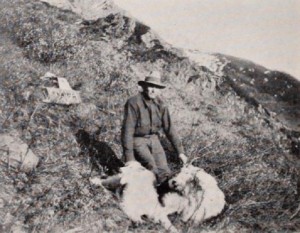
A film record of V. A. Morgan's hunt of Dall sheep in Alaska, 1931.
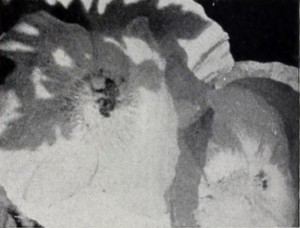
"As an openly avowed disciple of Herman Bartel, one of the old masters of nature filming, Martin E. Drayson has been an ably and imaginative pupil. Seldom have individual scenes of such delicate beauty as his poured across the screen of personal movies. Interlude in Sunlight, like Mr. Bartel's work in Awakening or Pathetique, is essentially an effort to interpret, in cinematic imagery, compositions of music. As such, it is divided into three sections or movements, comprised pictorially of bees, flowing water and flowers. The musical scores which these interpret are Paganini's Moto Perpetuo, Massenet's Meditation from Thais, and Johann Strauss's Wiener Blut waltzes. Preceding these pieces (during the lead title assembly) and between the several sections, Mr. Drayson has elected the use of complete silence." Movie Makers, Dec. 1945, 496.
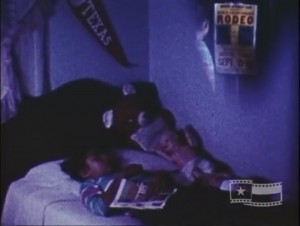
"This amateur film from Ramon Galindo is titled 'Josephine’s Dream' and uses home movie footage and special effects to tell a story. A girl is reading in her bedroom when she falls asleep and begins dreaming of going to the rodeo, a dream sequence we can see through Galindo’s use of special effects. The film then takes us to a rodeo in Austin in 1962, capturing scenes of bucking broncos, calf roping, lasso tricks, bareback bullriding, rodeo clowns, horse tricks, and, most notably, a performance by actor and singer Michael Landon. Landon sings with a trio of cowboy guitarists, likely performing his 1957 single 'Gimme a Little Kiss (Will 'Ya' Huh)' that was rereleased in 1962 to capitalize on his newfound fame in his role as Little Joe Cartwright on the television series 'Bonanza'." Texas Archive of the Moving Image.
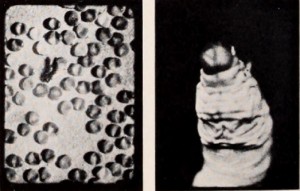
"Arthur R. Powell of Asuza, California, decided to photograph the silkworm from the egg to its full growth. For some of us who are of a nervous temperament this may seem a tedious task to set for oneself, but Powell started it and determined to see it through to the bitter end." American Cinematographer, Oct. 1932, 28.
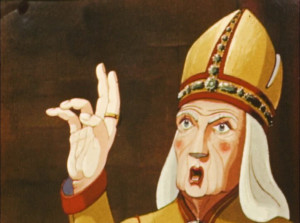
"Émile Gallet, ACL, a man of rare talents and infinite patience, treated us to a showing the other day of his 16mm. color cartoon, The Legend of St. Nicholas, which, with a six year interruption by the war, has been in the making since 1938. Based on an old French folk song of the 12th century, the cartoon relates the fairy tale adventures of three little children, a wicked butcher and kindly St. Nicholas." Movie Makers, Sept. 1949, 327.
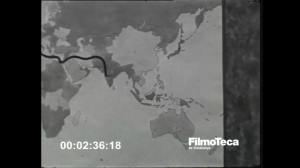
(Catalan): Un explorador vestit de safari recorre el món fent escala a ciutats com Roma, El Caire, Bombai, Nova York i Tànger, fins al seu retorn a Barcelona. En el seu periple entra a un bar de Nova York, visita una barberia i veu com un pidolaire té una màquina registradora. A Camerún veu un mico, un senglar, beu aigua d'un coco, es topa amb un hipopòtam. A Tànger visita la ciutat i els seus habitants, entra a una mesquita i coincideix amb un grup de música i ball. Finalment, a la seva arribada a Barcelona és rebut amb els més grans honors.
Mockumentary that depicts a fictional trip around the world. An explorer travels the world, stopping in cities such as Rome, Cairo, Mumbai, New York and Tangier. During the journey we see him entering a bar in New York, visiting a barber shop and seeing how a beggar has a cash register. In Cameroon, he sees a monkey, a wild boar, and runs into a hippopotamus. He also drinks water from a coconut. In Tangier, he enters a mosque and meets a music and dance group. Finally, upon his arrival to Barcelona, he is received with the greatest honors. All the locations were recreated by the director.
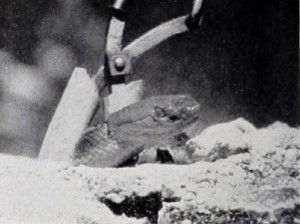
"Few individuals make so bold as to approach a snake either in a cage or its natural habitat. Leo J. Heffernan, however, not only approached a large number, but he has made a brilliant record of them in their natural surroundings and normal pursuits. No mere collection of harmless grass, garter and black snakes, this film of the field shows rattlesnakes, copperheads and coral snakes in their deadly dangerousness. Land Snakes Alive! is a comprehensive record of a series of field trips made by a group of amateur herpetologists, specialists in the study of reptilian life. An effective sequence deals with milking a rattlesnake of its venom; here, unusual and intelligent use is made of a split screen which shows simultaneously a medium shot of the subject and a closeup of the detailed action. Although the film is popular in style, it is highly informative. Even persons who shudder at reptiles will find amusement in the scenes of the common hog nose, or puff adder, playing dead when it believes itself in danger. Mr. Heffernan lets snakes put their best coils forward." Movie Makers, Dec. 1945, 494.
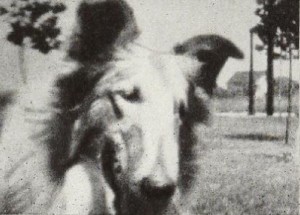
"Children and pets are generally lovable and always interesting; but filming them is not a simple task, as many amateurs have found out. Raymond J. Berger, in Lassie Stays Home, accomplishes it with a sure touch and an ease that will be the envy of his fellow filmers. The excellently planned story tells of a lost child who is found by Lassie, the loyal canine family member, after the baby's somewhat older sister hunts her frantically. No adult appears in any of the footage; and remarkably enough, one does not sense the directing mother, just out of camera range. The whole movie goes forward as if the children and Lassie were entirely alone, with the camera miles away. Here is 8mm at its best and here is a film that every amateur would be proud to have made." Movie Makers, Dec. 1945, 494.
"The Last Review, by George A. Ward, ACL, is an almost faultless example of a military motion picture, into which is woven a story that has the rare quality of evoking deep emotion from the audience. Actually, the film is a record of the camp life of the 105th Field Artillery of the New York National Guard, in its summer instruction quarters at Pine Camp, N. Y. Dramatically, it is the story of a Field Artillery private soldier and his friend, the oldest horse in the regiment. Condemned to be shot because of age and the approaching motorization of the command, the horse is reprieved and is given a review by the entire regiment in honor of "the artilleryman's best friend." The tale was not fictional, but actual. The hero was a member of the regiment, he loved the veteran horse and the review was actually held, not for purposes of filming but as a tribute. The film ends with the review, while actually the reprieve was only temporary and the equine actor has since been destroyed because of age. In this film, Mr. Ward exhibited cinematography of high quality and much incidental beauty. He contrived, as well, to give a military record that errs in no detail and that has no false note. To crown it all, he filmed a scenario, in itself moving and acted with complete sincerity." Movie Makers, Dec. 1934, 534.
"In the educational class, E. N. Harrison's two reel subject, 'The Least Tern,' was excellent. For general showing the film unquestionably did have too much repetition, but for strictly educational use this would be an asset. More serious was the lack of necessary explanatory titles. The photographic technique was truly excellent, for virtually the entire film must obviously have been made with extremely long focus lenses, shooting from a blind, and the results on the screen were practically perfect." American Cinematographer, Feb. 1938, 76.
Total Pages: 19